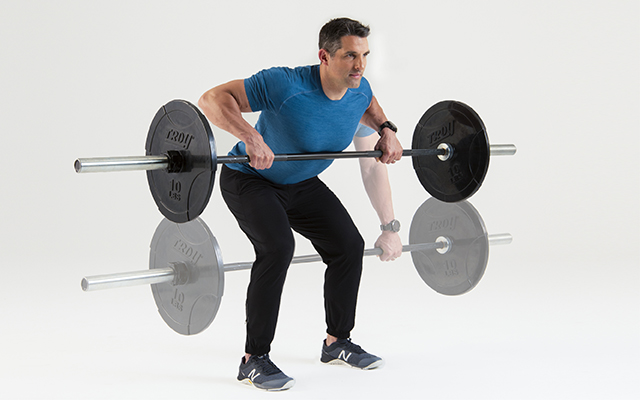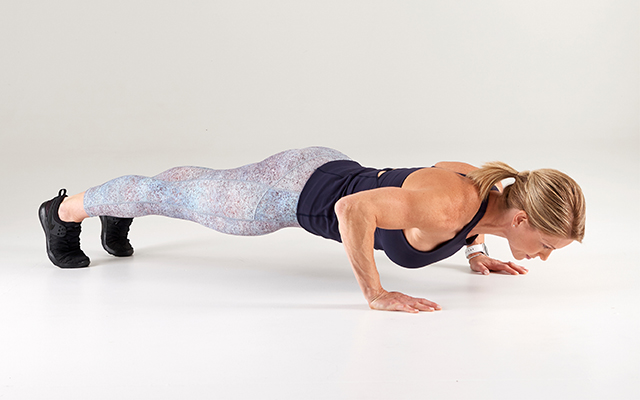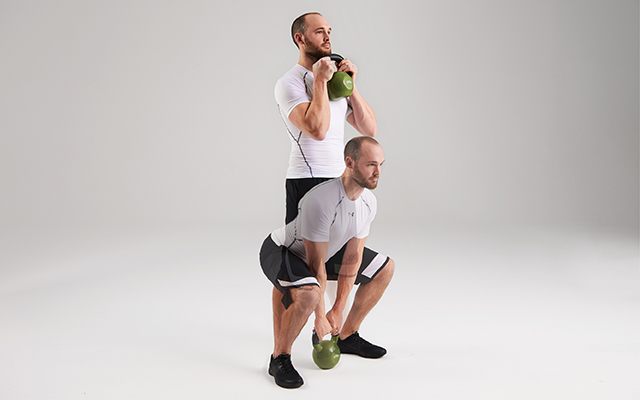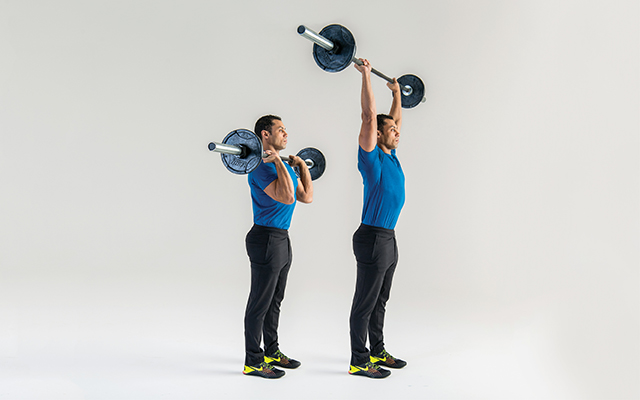If you want a strong back, there’s no way around it: You have to pull. One of the most powerful upper-body pulls is the bent-over row.
An excellent way to build strength through the middle and upper back, lats, and shoulders, this row also enhances mobility through the scapulae and improves stability in the thoracic spine and deep abdominals.
The pulling motion also helps offset some of the harm done while you’re hunched over computers, smartphones, and steering wheels. This improved upright posture can reduce pain and discomfort in everyday life, plus boost performance in fitness pursuits as varied as deadlifting and running.
Trouble can arise if you use improper form or too much weight, which can limit range of motion and put pressure on the lower back, elbows, and wrists. (Quick tips: If you have lower-back discomfort, assess your hip hinge and brace your core. If you feel pressure or pain in the elbows or wrists, focus on pulling from the shoulder.)
Read on for advice on maintaining proper form so you get the most out of your bent-over row.
1. Hold a loaded barbell (or dumbbells or kettlebells). Hinge your hips back until the weight reaches about knee height. Allow your arms to hang like ropes, with wrists straight and elbows extended.
- Tip: The bent-over row begins and ends with a perfect hip hinge. Avoid thoughtlessly bending over and folding at the waist.
2. Brace your core, keeping your spine neutral. Retract your scaps and bend your elbows to raise the weight. It will finish somewhere between your belly button and the bottom of your sternum.
- Tip: Don’t wrench your neck up or down. Stay neutral and keep your gaze out in front of you.
3. Squeeze your shoulder blades together and pause for a two-second count at the top to activate your upper back.
- Tip: Initiate the pull by drawing your shoulder blades together. Once your scaps retract, bend your elbows and lift the bar toward your rib cage.
4. Reverse the movement to lower the barbell with control until your arms are fully extended. Maintain the hip hinge and braced core as you repeat for the desired number of reps.
- Tip: Keep your back straight from head to hips. If you are rounding forward, reduce the weight and practice getting into the correct position.
Intermediate Variations
Single-Arm Bent-Over Row
- Begin with your left knee and hand on a bench and your right leg extended with your foot planted flat on the floor.
- Hold a dumbbell with your right hand, right arm fully extended. You’ll feel a slight stretch in the shoulder.
- Keeping your neck and spine neutral, pull your elbow back toward your hip as you draw the dumbbell toward your rib cage.
- When your tricep is parallel to the floor, pause for a two-second count at the top to activate your upper back.
- Lower the dumbbell with control until your arm is fully extended.
Chest-Supported Bent-Over Row
- Raise one end of a bench on a low box, or set up an incline bench to about 45 degrees. Lie face-down on the bench so your torso is fully supported and feet are planted on the floor on either side of the bench.
- Hold a dumbbell in each hand, and extend both arms.
- Brace your core against the bench, and retract your shoulder blades to initiate the movement.
- Bend your elbows to draw the dumbbells up toward the bench.
- Squeeze your shoulder blades and pause for a two-second count at the top to activate your upper back.
- Reverse the movement to lower the dumbbells to your sides.
Advanced Variations
Kroc Row
Kroc rows are similar to single-arm bent-over rows, but with a substantial amount of oomph behind them — put momentum into each pull as though you were starting a lawnmower. You will be able to row more weight to target the upper back.
Pendlay Row
Pendlay rows are similar to barbell bent-over rows, but your bumper plates will return to the floor at the end of each repetition. This variation requires maintaining a deep hip hinge, as though you were holding the setup of a deadlift throughout the movement.




This Post Has 0 Comments